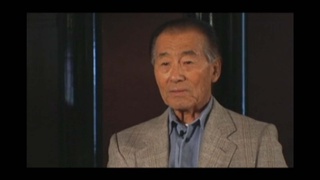Interviews
Importance of education in achieving redress for incarceration
I feel that the major contribution has to do with the educational process, which is a major underpinning of the whole redress movement, because we were a people unknown to the rest of the country. And because what happened to the Japanese Americans was not in a textbook, nobody knew it happened. It's like it's a fable, 'You're making it up.' Or people's need to deny that their country is their mother -- 'mother'. 'Mother does nothing wrong.' It would be like the Holocaust, people say 'That never happened. Jews are making it up.' So, the same thing with our people.
Date: August 28, 1998
Location:
Interviewer: Darcie Iki, Mitchell Maki
Contributed by: Watase Media Arts Center, Japanese American National Museum.
Explore More Videos

“No more shikataganai”
(1916-2010) draft resister, helped form the Heart Mountain Fair Play Committee


A visit to Jerome after OCS
(1919 - 2006) World War II and Korean War veteran




General Ryder’s faith in the 100th infantry battalion
(1919 - 2006) World War II and Korean War veteran


Lost respect for the flag after incarceration
(1913-2013) Doctor specializing in obstetrics in Southern California

Traumatic experiences before camp
(1913-2013) Doctor specializing in obstetrics in Southern California

Joining the hospital unit in Santa Anita Race Track
(1913-2013) Doctor specializing in obstetrics in Southern California

“Everybody went in like sheep”
(1913-2013) Doctor specializing in obstetrics in Southern California

The horror of Hiroshima after the atomic bombing (Japanese)
(1928 - 2008) Drafted into both the Japanese Imperial Army and the U.S. Army.

Finding out Roosevelt wanted Japan to attack
(1919-2020) Member of the 1800th Engineering Battalion. Promoted Japan-U.S. trade while working for Honda's export division.

Parents expected to be taken by the FBI
(1919-2020) Member of the 1800th Engineering Battalion. Promoted Japan-U.S. trade while working for Honda's export division.
